We continue our slow drive north up the Wild Atlantic Way, a 1,600 mile driving route along Ireland’s west coast, hugging the coastline, mostly on minor roads. This is the road I remember from thirty years ago; grey boulders on the beach, in the fields, on the hills. Rocks stretching to the horizon. We stop in Doolin and visit the second-hand bookshop. I have a good chat about hare coursing, bookselling and the joys of life in Clare with the woman bookseller from New York. She wasn’t the owner in 1994 but the impression I get is that she’s been here for many years, painting attractive watercolour postcards at a cluttered desk in the corner of the bookroom. The books on display are dismal, dusty, dogeared, cheap editions but there’s a decent collection of classic Irish fiction paperbacks. I buy one of her delightful postcards.
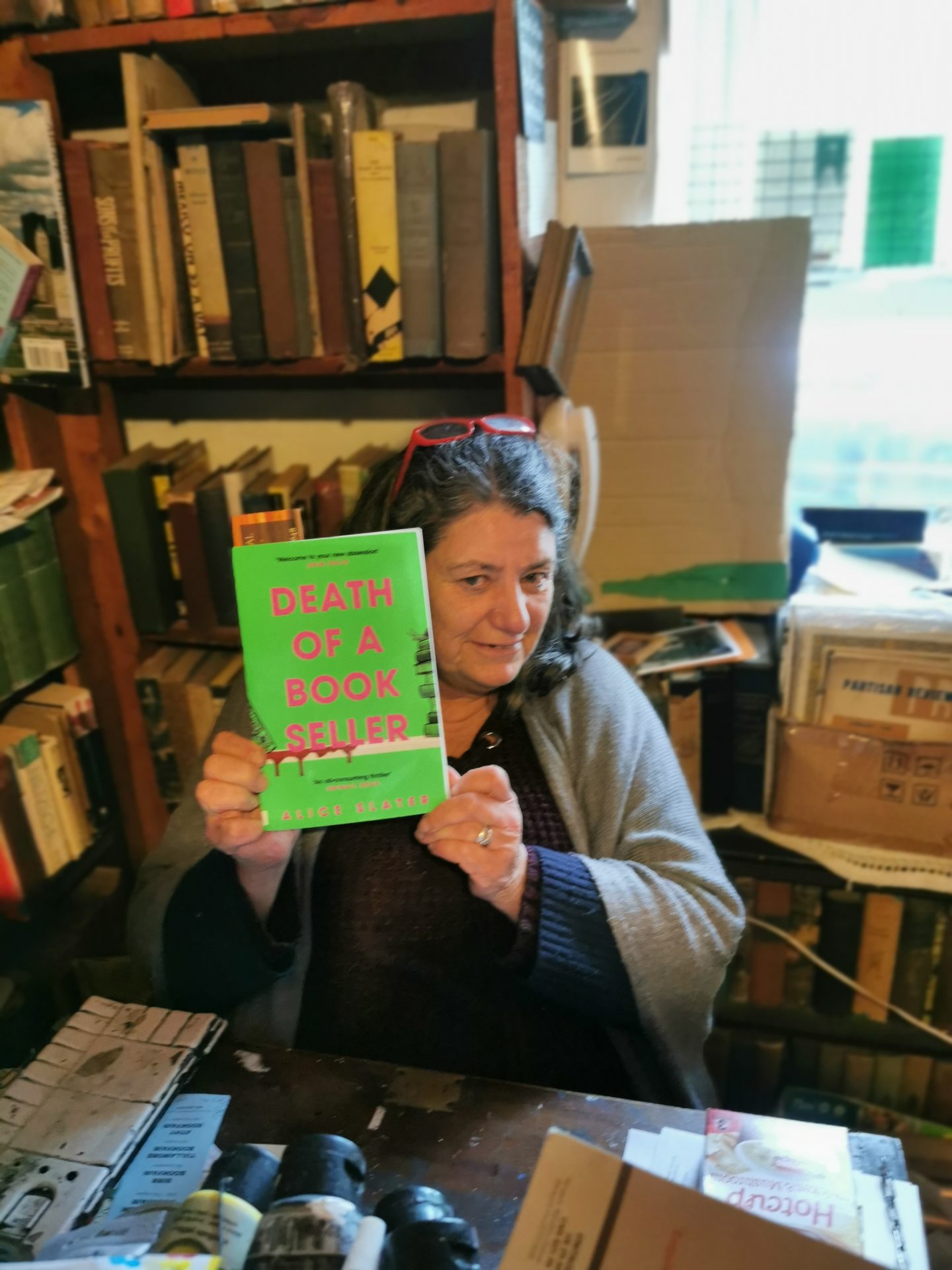
We’re toying with the idea of visiting Galway but now the rain’s lashing down and the slow progress past the high tech office blocks of the city outskirts compel us to push on. Not all overnight stops are in exquisite beauty spots and this evening we pull into a modern church car park a few miles off the N59.
It’s a bright beautiful Sunday morning and, after breakfast, we’re quickly underway before the faithful turn up for early mass. We’re on the road to Connemara alongside fast flowing rivers and blue sparkling lakes. The countryside, some of the most beautiful in Ireland, is a sparsely populated terrain of bogs, heaths, grassland and woodland. Ahead of us we can see a small mountain range; the twelve Bens of Connemara. There are occasional single storey cement rendered houses alongside abandoned, ivy choked derelict cottages. A few miles north of the town of Oughterard we pass a small stone humpback bridge surrounded by a crowd of camera clicking tourists. It featured in the 1950s John Ford movie, The Quiet Man starring Maureen O’Hara and John Wayne. The colours of the hills, fields, rivers and lakes around the bridge are Technicolor green and blue, just as I remember in the movie.
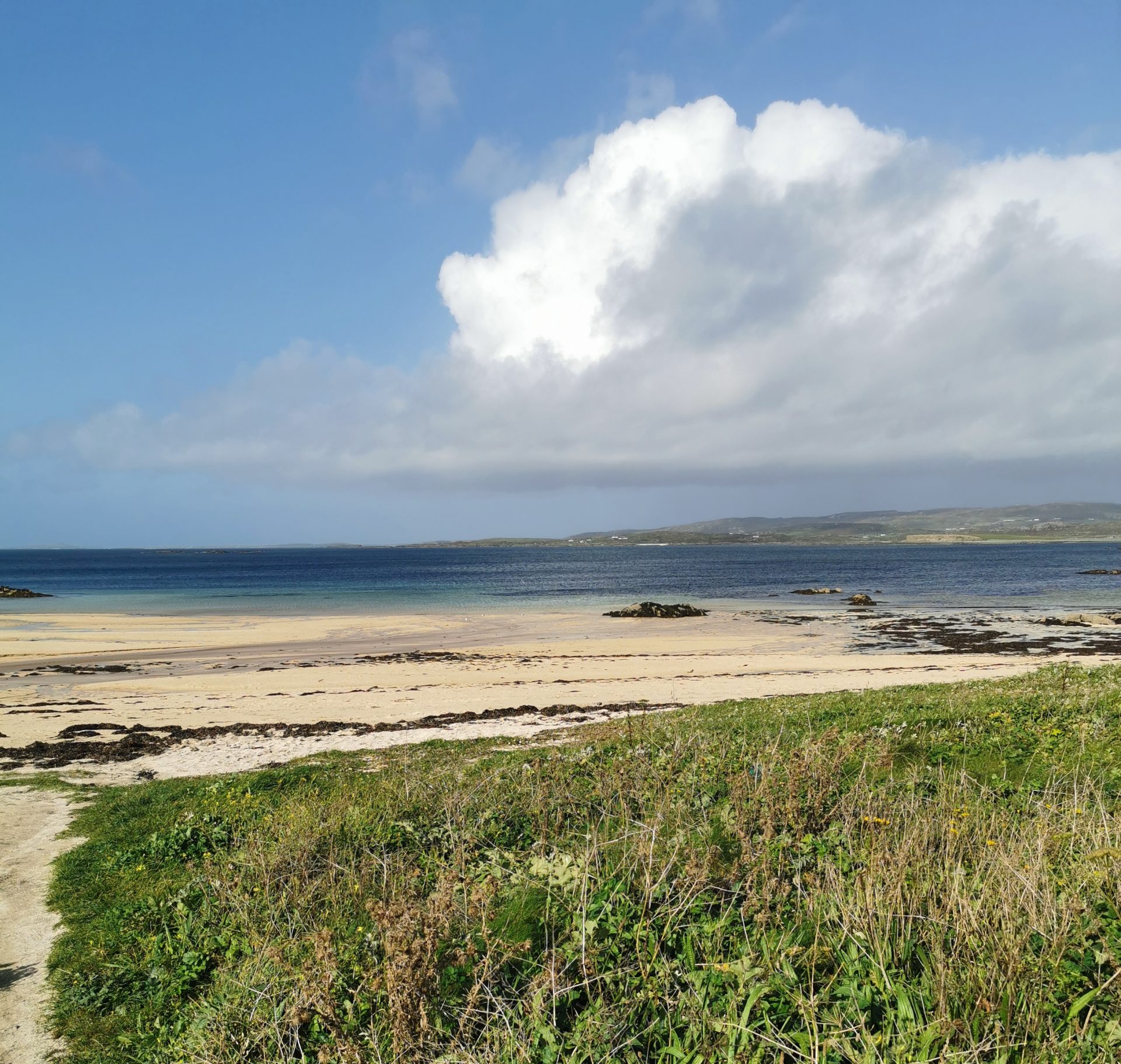
We stop at a small car park at Dogs Bay, a small horseshoe shaped bay with a white sand beach. The ocean looks inviting but the tide is low and despite a stiff coastal breeze, today we plan to cycle. I’ll swim tomorrow. From Dogs Bay there’s a twenty-two mile circular route called the Bog Road, which, as the name suggests, encloses an expanse of wild bogland with the backdrop of the sharp pointed twelve Bens.
We unfold the Brompton bikes and, with consideration of the elevations on the route and the wind direction we opt to cycle anticlockwise. It’s a fine cycle in the warm sunshine on a smooth tarmac surface through peat bogland with the twelve Bens and their canopy of fluffy cumulus clouds always in view. Spiral horned blackface sheep are the only inhabitants of this land. Despite being circular we always seem to be cycling into the headwind and the last half hour is steadily uphill and very hard work on the heart and lungs. This is my first proper outing on a bike since recovering from pneumonia in September, and I’m challenged but very happy with my ability to keep up with Jo on this 2 hour 40 minute ride.


It’s beautiful back at Dog’s Bay in the mid afternoon sunshine so I open a bottle of champagne, a leftover gift from Jo for my birthday. The popped cork arcs onto the beach and it’s spotted by a couple of women next to us out walking their dog. They sense a celebration and they’re right, we’re drinking a toast to being alive in this place on this day. One of them asks if we’d like our photograph taken and congratulates us. It’s a grand moment. To further celebrate the celebration we drive the short distance to the pretty little fishing village of Roundstone where, sitting at the bar of O’Dowds restaurant, with the door open to the sunshine overlooking the tiny harbour, we enjoy a dozen oysters and a couple of pints of Guinness. We are happy epicureans for the day.
We stay for the night by the beach at Dogs Bay and the following morning, in the bliss of continuing sunshine, we slowly meander further up the coast to the town of Clifden where we shop for supplies and buy a couple of warm Irish woollen jumpers. In Clifden town square is a bronze statue of John Alcock and Arthur Brown erected to commemorate the first ever transatlantic flight in June 1919 (they crash landed in a bog just south of here). I’m astounded to be reminded that it’s only just over a hundred years since mankind first flew across the Atlantic.

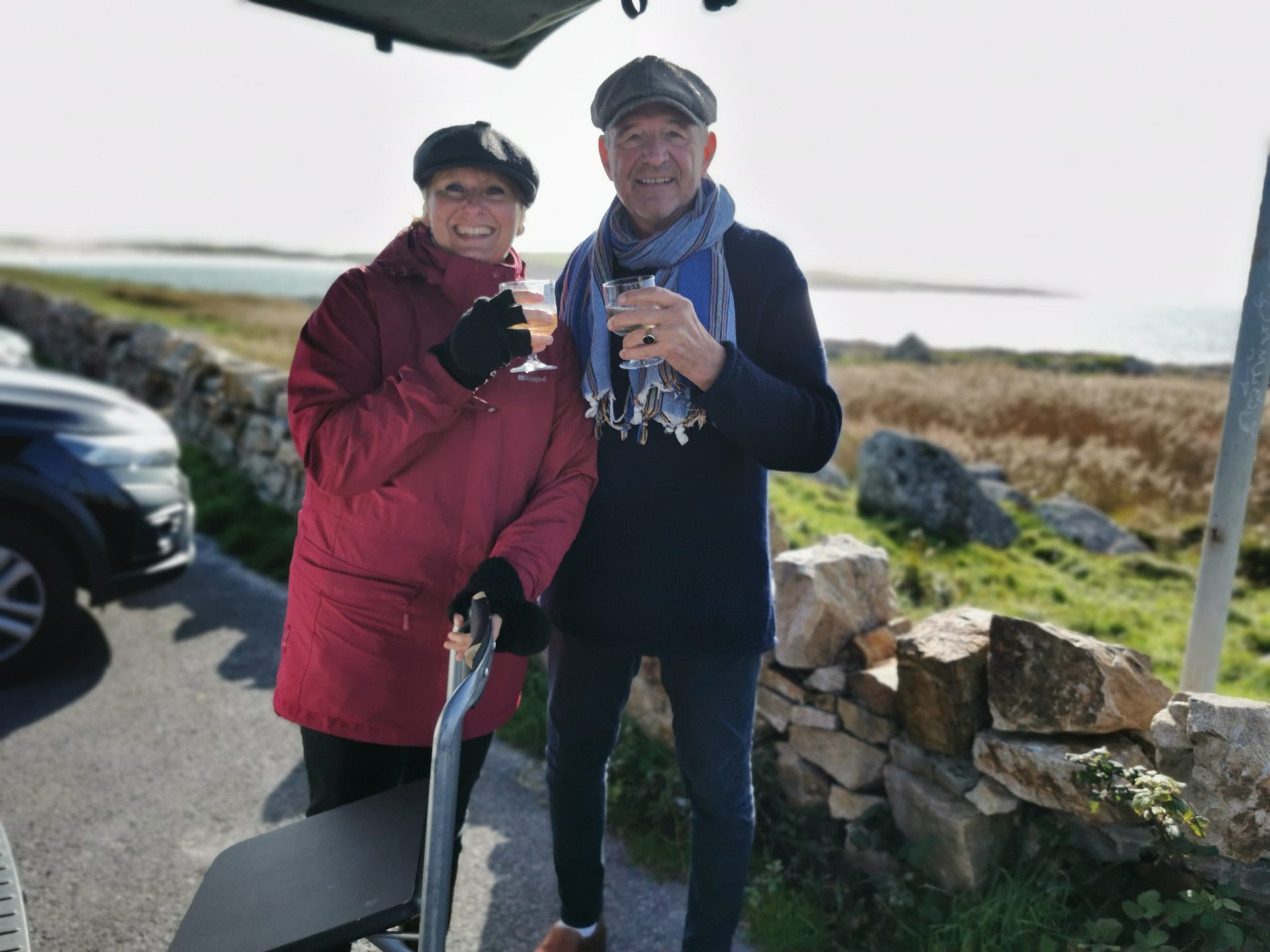
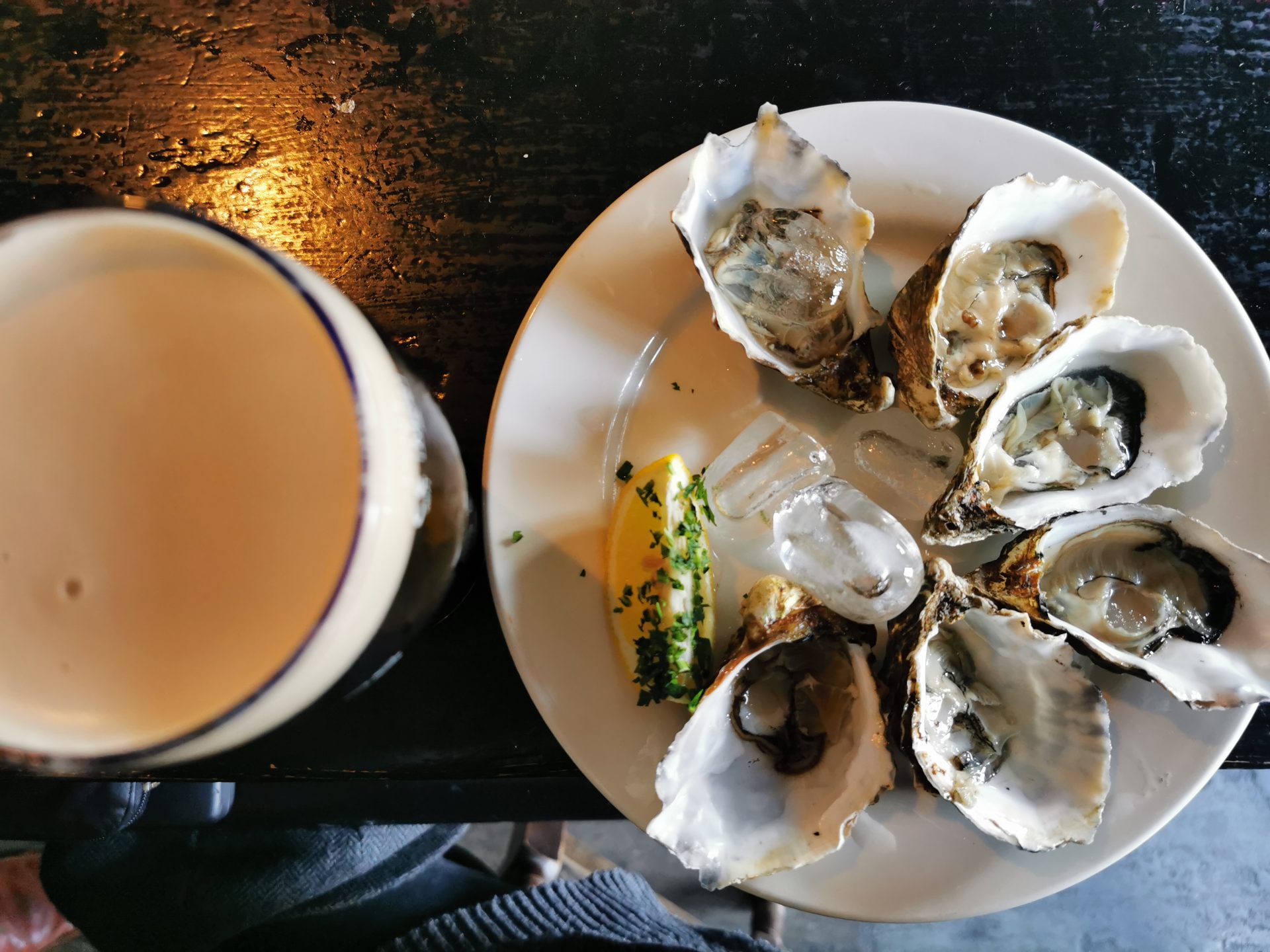
Beyond Clifden to the northwest is the tidal island of Omey, accessible from the mainland only at low tide across a stretch of wet sand. Described in the past as desolate and remote, it was the last bastion of paganism in Ireland. Duffy’s Hibernian Magazine said of it, ’Can there be anything to distinguish that flat unpicturesque abode of misery from any other spot in which human wretchedness prevails along the most desolate tracts of the Irish coast? We answer, yes: that poor unfavoured island in the remote west, nearly half the surface of which is covered by a lough and spewy marsh, while the other half is little better than drifting sand’. That seems rather harsh. Today in the Autumn sunshine, at low tide, it looks very welcoming. We walk across the sand, returning smartly in the flood tide. There are tracts where the sea is pooled and wet feet are unavoidable. We watch a Landrover with, strangely, a decorative floral laurel on the bonnet, weave fast across the sand sending up sprays of seawater.
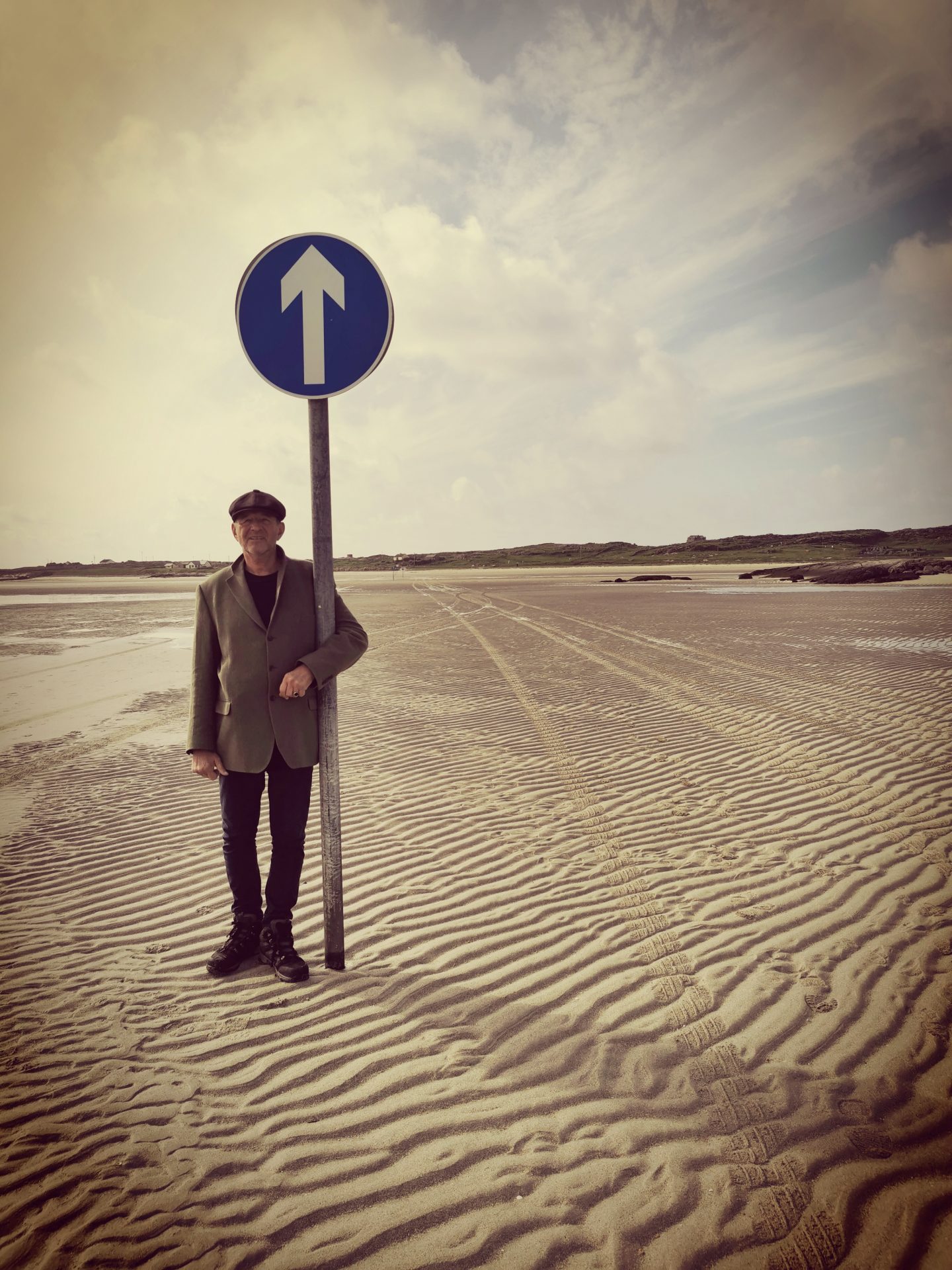
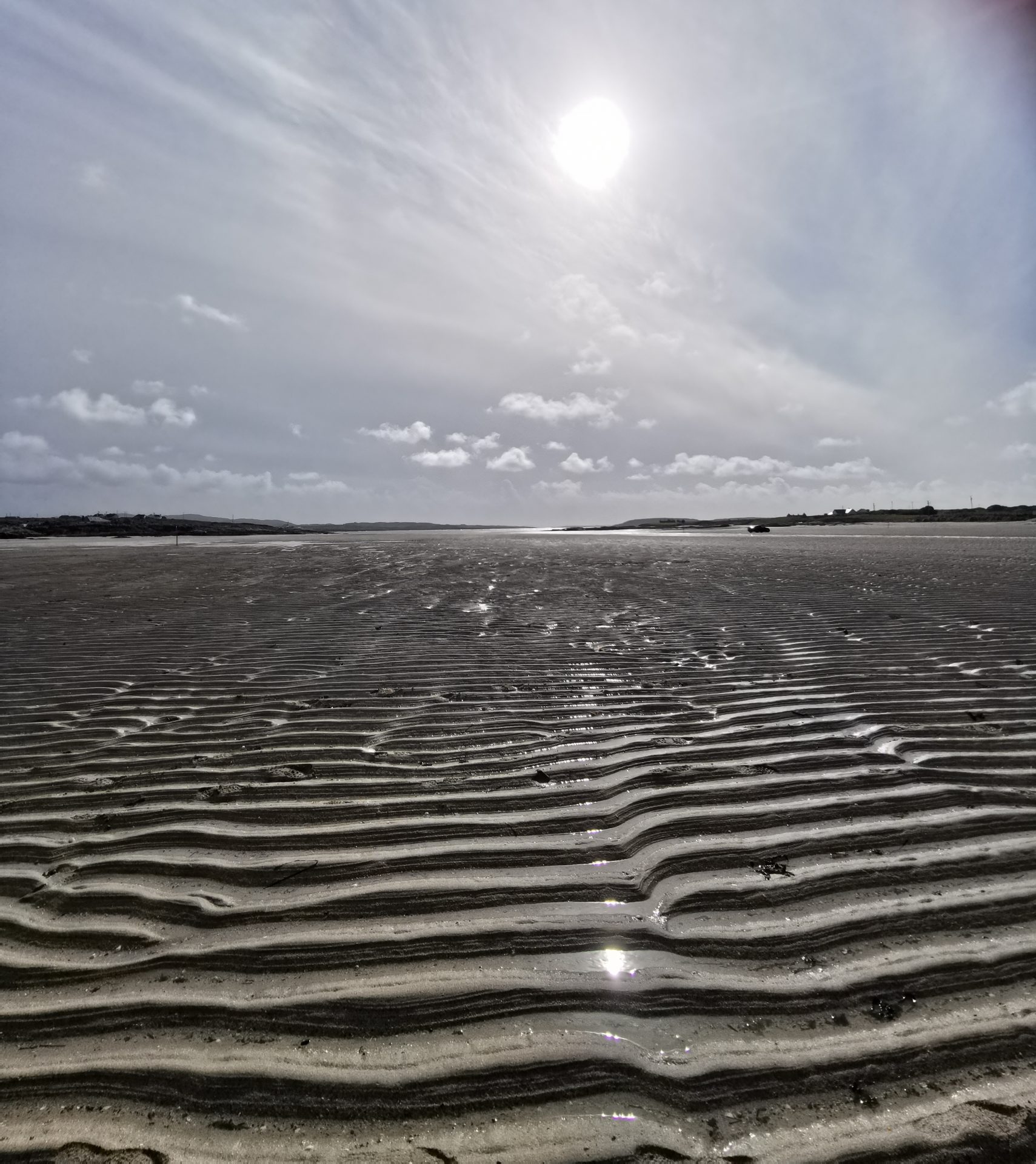
With the tide coming in there can be no more excuses. I must find a beach from which to swim. Forty minutes north is the beautiful expansive white sandy Renvyle beach with views over the ocean towards craggy Clare and Inishturk islands. We park just above the beach and Jo goes off to explore, leaving me to squeeze into my wetsuit. I’m standing at the edge of what must be, due to the vastness of the ocean and the low population, some of the cleanest waters around these islands. The waves are breaking gently near to the shoreline and, after just a few metres, I’m able to swim head down. I’m not sure that the wetsuit is entirely necessary and resolve that my next swim will be without it.
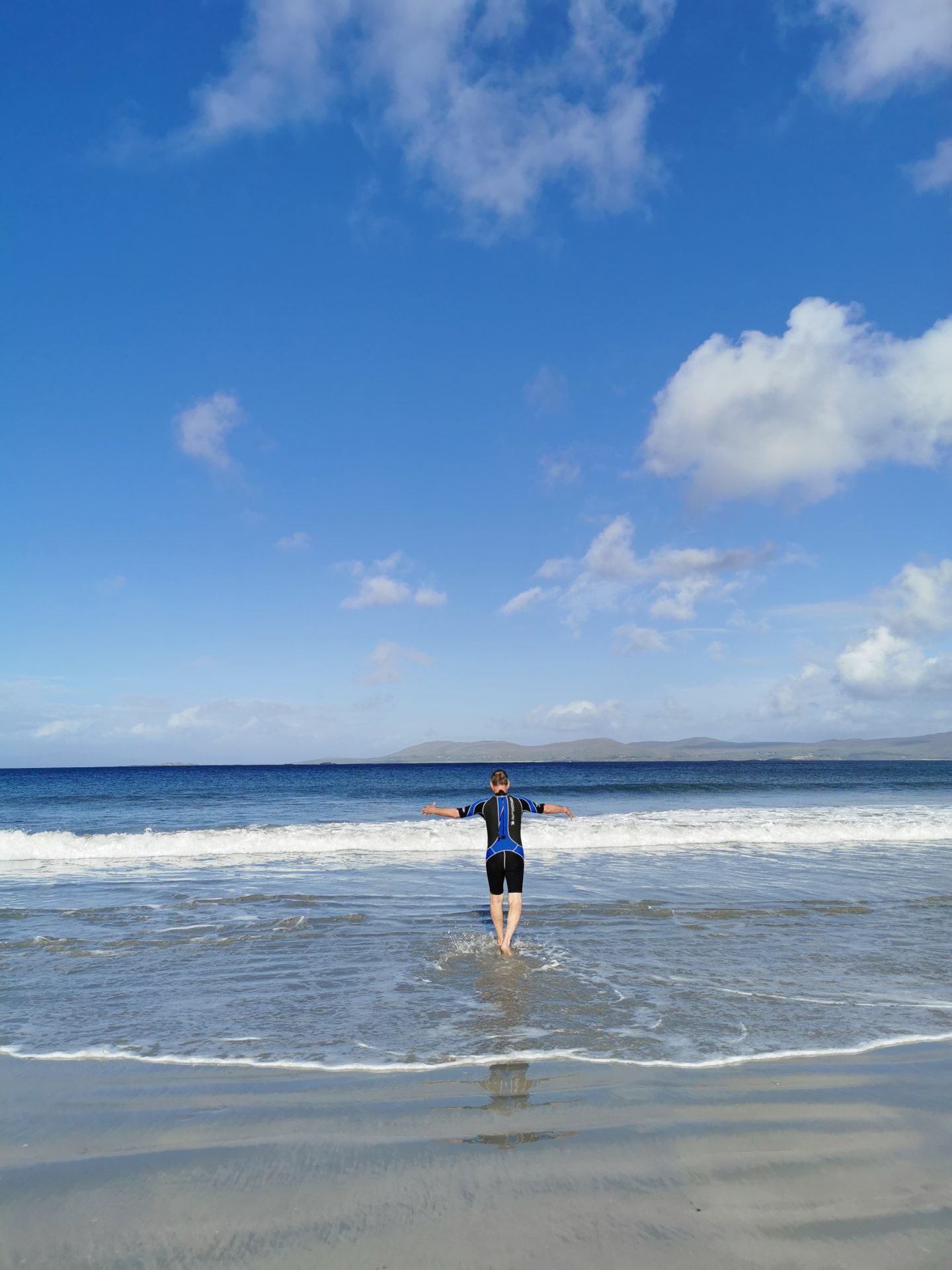
In the late afternoon we drive along the southern shoreline of the nine mile long Killary fjord, one of only three glacial fjords in Ireland. At its head we turn left into Mayo and along the northern shore until we find a deserted parking place high on the cliff with terrific views up and down the fjord in the setting sun. The next morning we’re on the move again; a two hour drive to mountainous Achill island, the largest of the Irish isles. We cross the bridge joining it to the mainland and continue on to a carpark on the edge of the cliff overlooking the golden sands of Keem Strand and Keem bay. The beach looks somehow familiar and I discover that several scenes of the blockbuster movie The Banshees of Inisherin were filmed at Keem Bay. It’s home to Colm’s (Brendan Gleeson) cottage and the backdrop for many of the film’s beach moments, including its final scene.
It’s a very gusty evening and impossible to cook at the outside kitchen, so it’s another one pot meal in the oven and early to bed. It’s an incredibly gusty night, the wind howling in a succession of one minute squalls, violently shaking the van which I’ve parked close to the cliff edge, better to enjoy the view first thing in the morning. These squalls are interspersed with periods of total silence, amplifying the subsequent howl. I sleep very little.

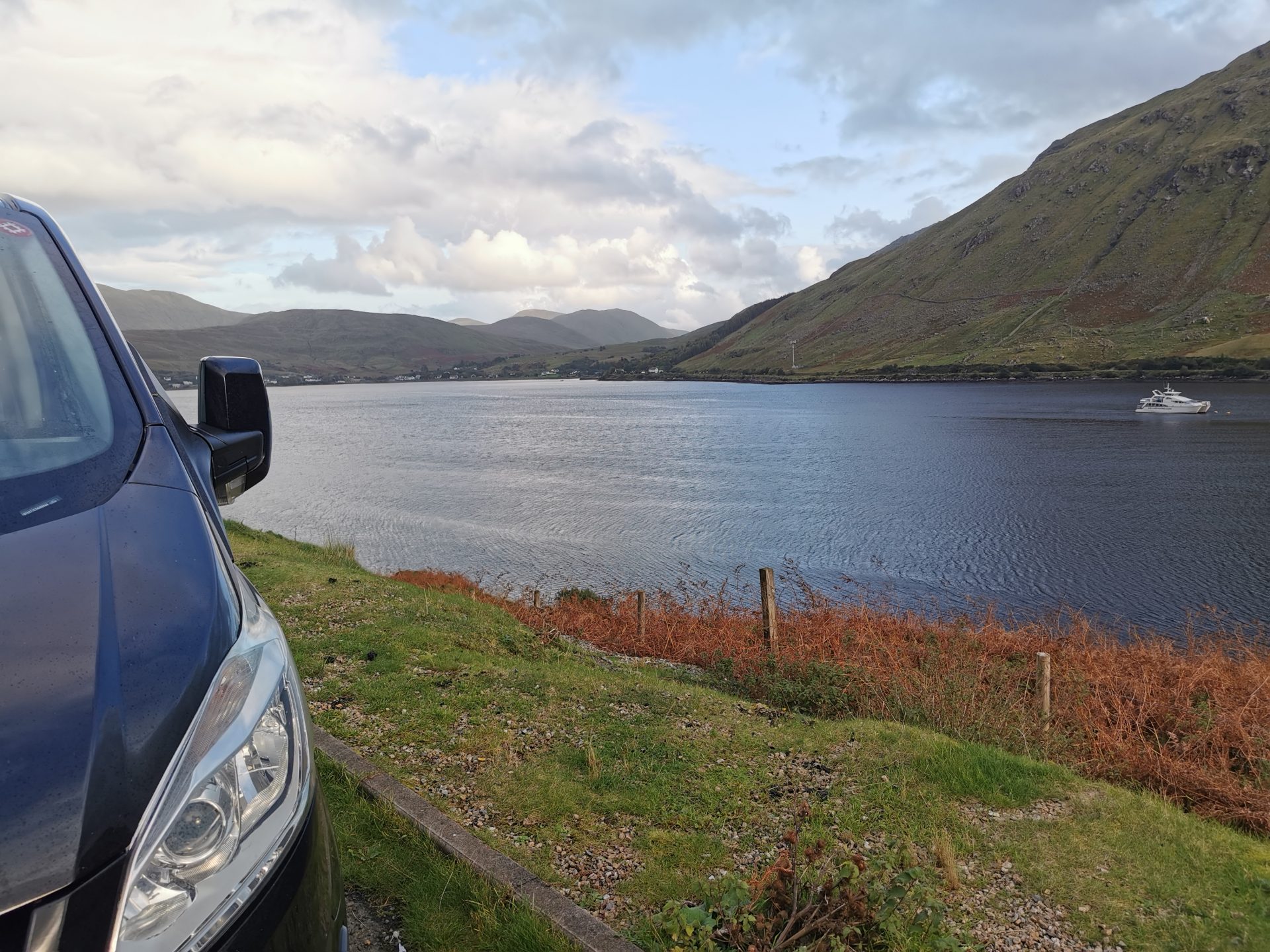
For the next stage of our Irish journey please visit A Wedding in Donegal.